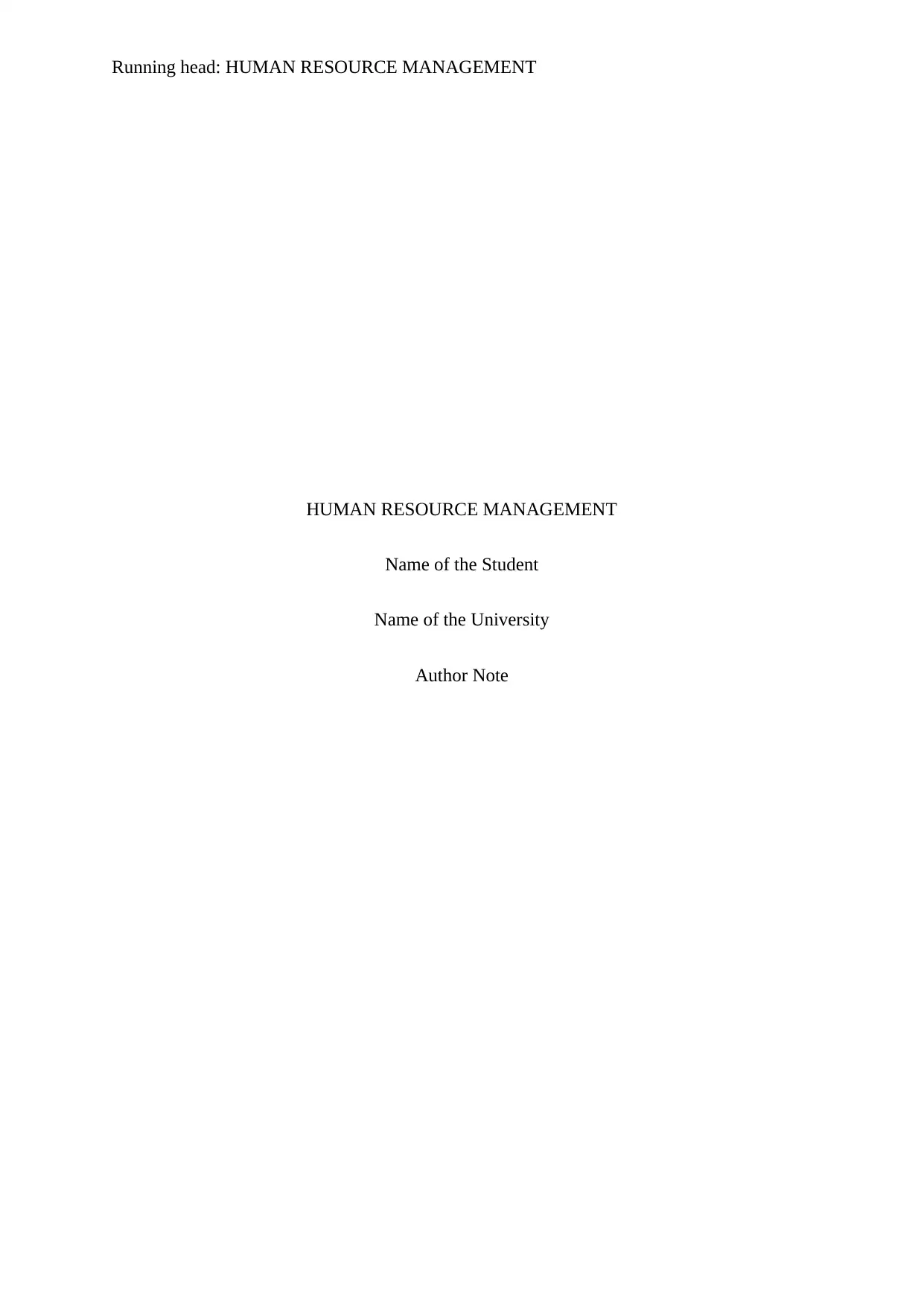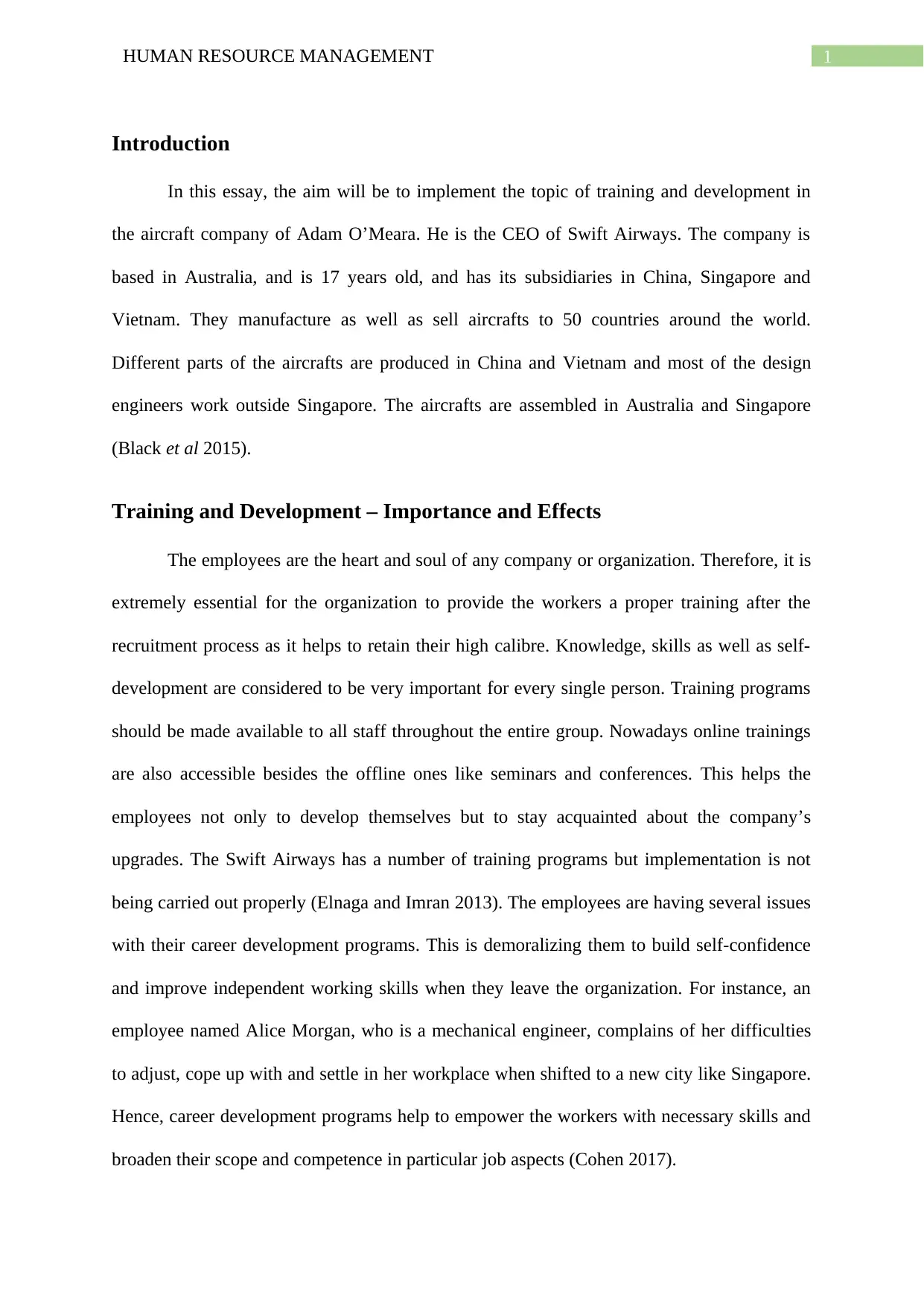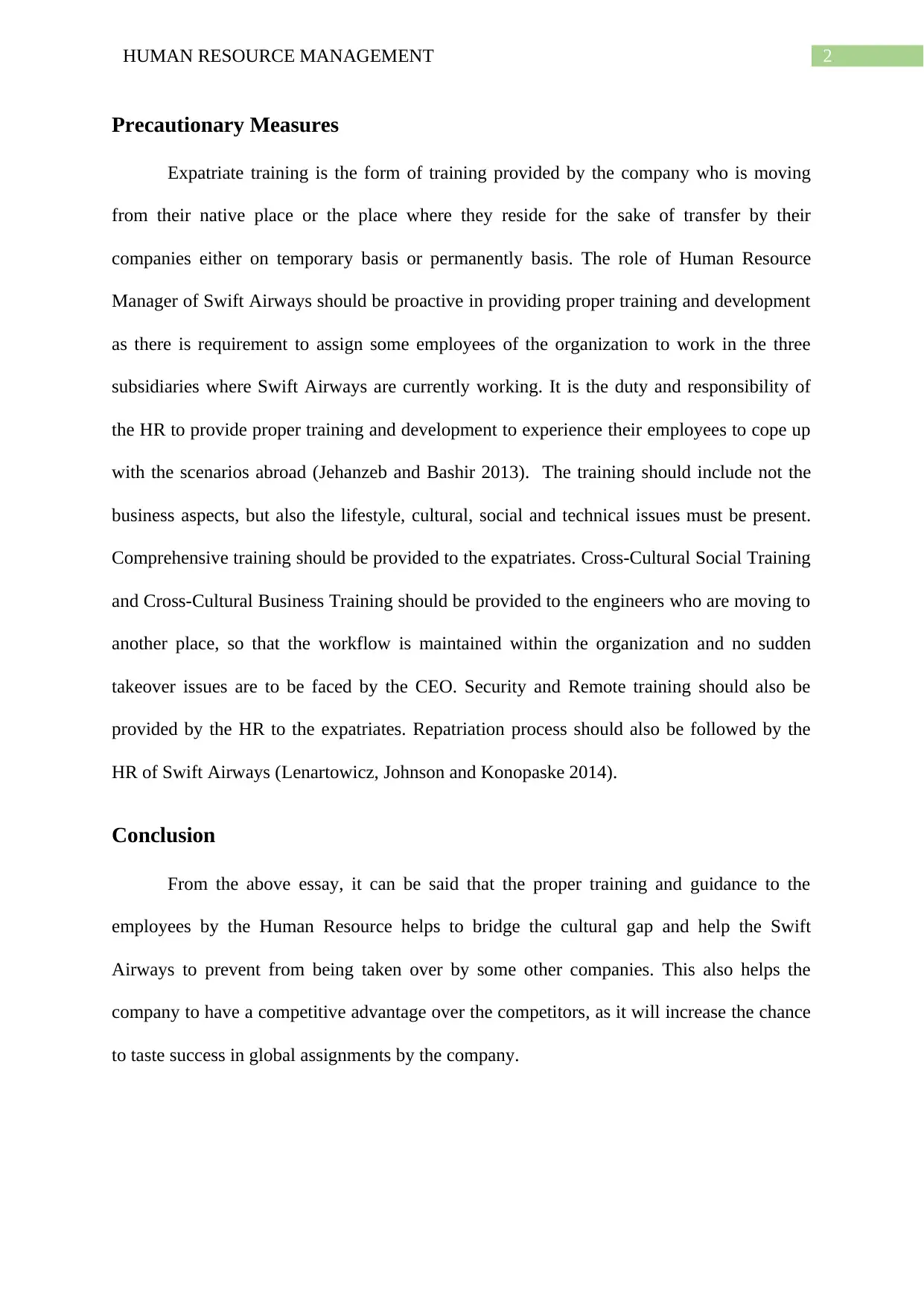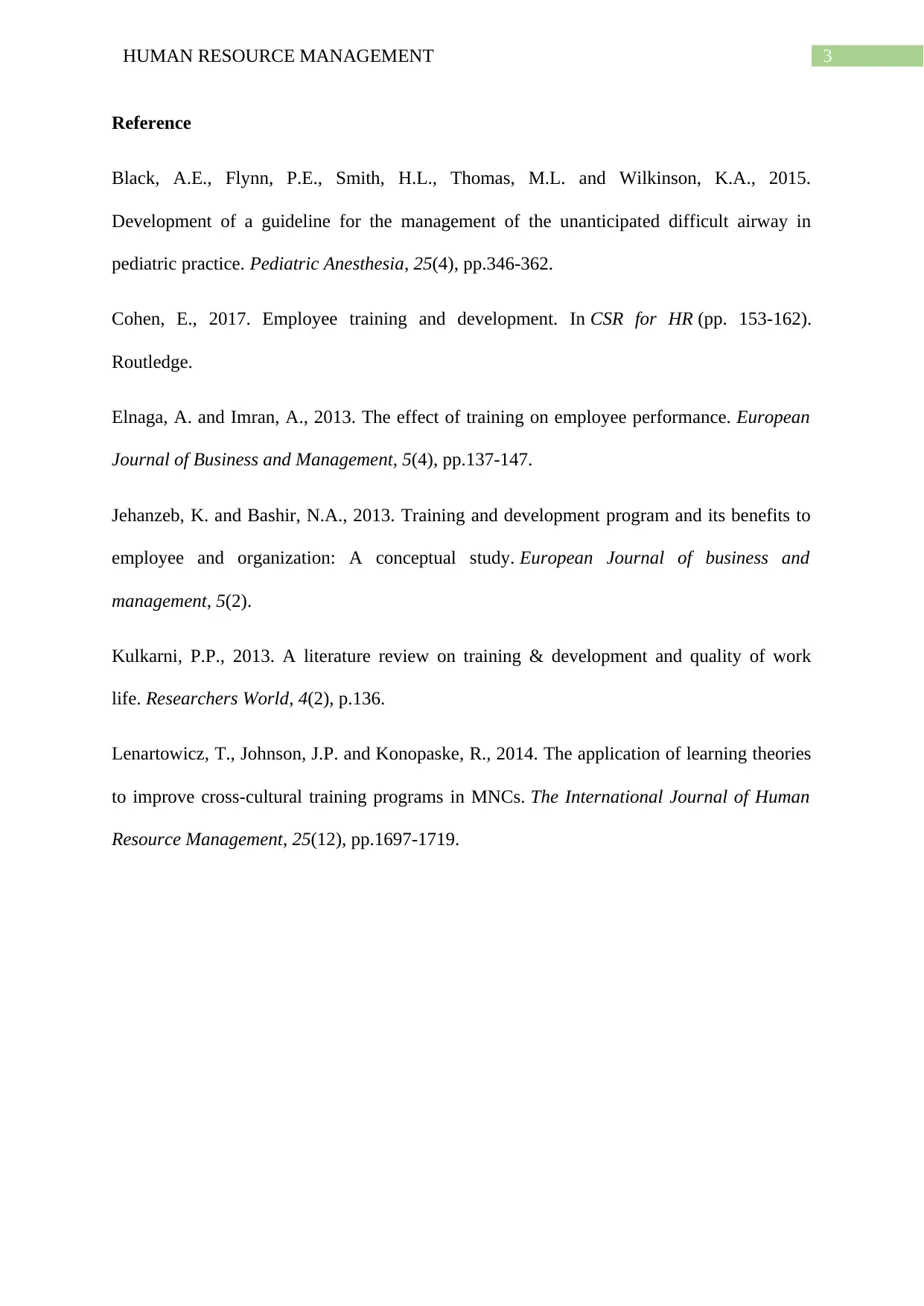Training and Development in HRM: A Case Study of Swift Airways
VerifiedAdded on 2022/12/23
|4
|893
|57
Essay
AI Summary
This essay examines the critical role of training and development within the human resource management framework, using Swift Airways, an international aircraft company based in Australia with subsidiaries in China, Singapore, and Vietnam, as a case study. The essay highlights the importance of employee training programs, focusing on the need for effective career development initiatives to enhance employee skills and morale, and to address challenges faced by employees, such as those moving to new locations. It emphasizes the significance of expatriate training, encompassing business, cultural, social, and technical aspects, to ensure smooth operations in the company's subsidiaries and to avoid potential takeover issues. The essay also touches upon repatriation processes and cross-cultural training to promote global business success. The aim is to ensure shareholder return and competitive advantage through effective HR strategies.
1 out of 4











![[object Object]](/_next/static/media/star-bottom.7253800d.svg)